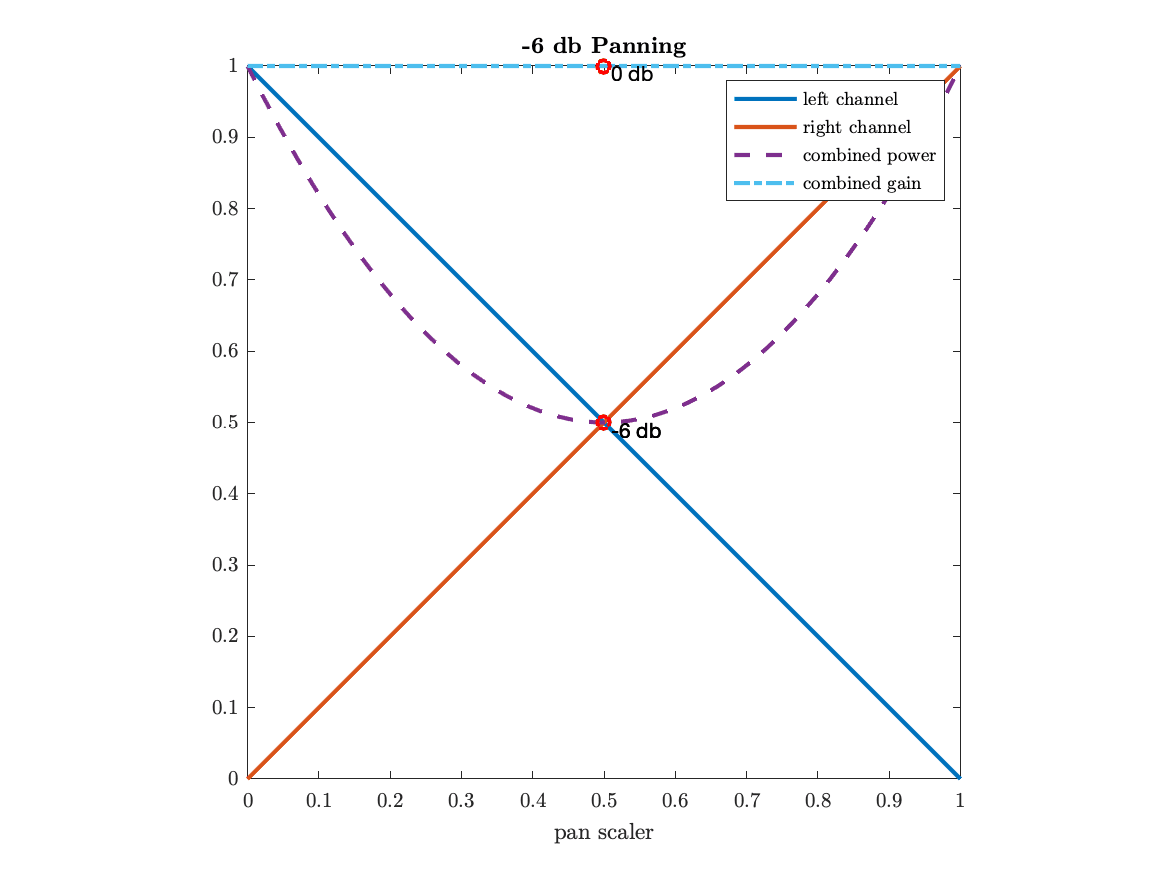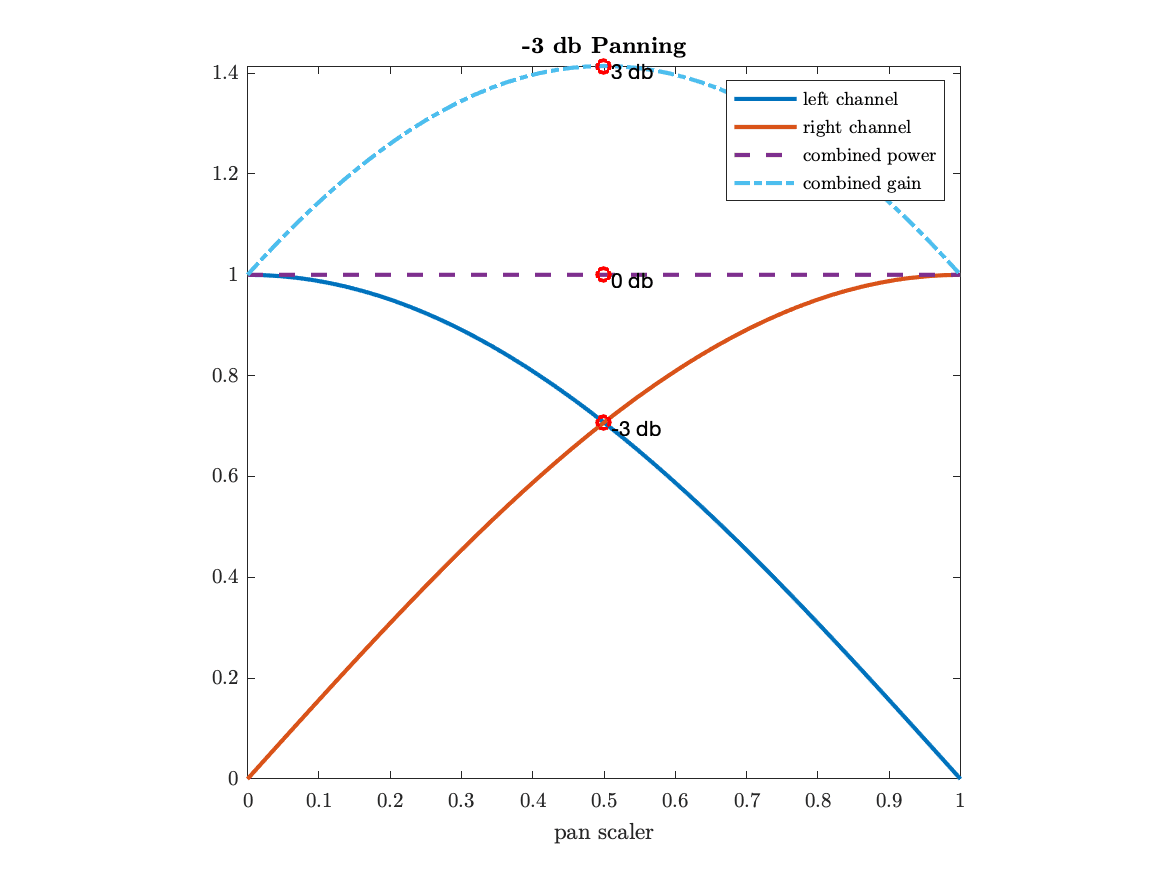A Detailed Overview of Panning-Functions
There are many ways to pan mono signals, more than one would think of in the beginning. Here we will take an in-depth look into all amplitude-based panning functions, and how they differ from each other.
In general, amplitude-based panning works by adjusting the level of the signal in the left and right channels. If one of them is louder than the other, the signal will appear towards that side.
1. The Math Behind Them
To calculate the amplitude of each channel, we first need to normalise our pan position from within our DAW or preferred range to a scalar between 0 and 1, where 0.5 is the center pan position.
1.1. Linear Panning (-6 dB)
Linear panning simply uses the above-calculated pan scalar as a scalar for the amplitude. Through this, the combined amplitude of the left and right channels is always the same as that of the original mono-source signal.
This method leads to a 6 dB dip in the combined power at centre-pan, which will be perceived by the listener as a drop in loudness while moving a signal from left to right.

1.2. Constant Power (-3 dB)
Constant power panning aims to alleviate this exact issue. It is designed in such a way that the combined power of the two channels is always the same, hence the name. Because of this, it is also the most commonly used pan law out there - some DAWs only have implemented this one. (So if your DAW doesn't give you a choice, they are using this one).
The only drawback is, that it also creates an increase in overall signal gain at centre-pan of 3 dB, so when moving a signal from left to right, be aware that it might clip when it’s in the middle.

1.3. -4.5 dB Panning
The last of the three aims to combine the advantages and disadvantages of both. It only leads to an increase in amplitude of 1.5 dB in the middle and a power drop of -3 dB. While it is not very commonly used in modern DAWs, it was and still is the built-in function in many analog consoles, e.g. by SSL.

2. Compensated vs Uncompensated?
To make it even more complicated, Apple’s Logic Pro X gives you the choice between a compensated and uncompensated version of each pan law. Other DAWs might secretly use one over the other without telling you. So what is the difference in the first place?
As we can see in the graphs above in all the pan laws, each channel is attenuated at centre-pan position. Compensated pan laws, well, compensate for this by gaining each channel by the maximum attenuation at centre-pan. So, for example, a signal will be gained by 3dB when using a compensated constant power pan law. This, of course, then means that the amplitude of a hard-panned signal can easily go above zero.
3. So What Does This All Mean If You Just Want To Make Music?
To be honest, probably nothing. The constant power panning function has been the de facto standard for years now and is used by every DAW as a default setting. Whether it is compensated or not also will not change the music you make, only the level you mix the track in.
So at the end of the day, as long as you leave everything at its defaults and let your tools handle all of this for you, you won’t have to think about it in your day-to-day life. That’s what us nerds are here for! :)
4. References
- Tarr, E. (2019). Hack Audio - An Introduction To Computer Programming An Digital Signal Processing In Matlab®. Routledge, New York
- Brix, Eddie (2020). Audio Metering - Measurements, Standards, And Practice. Third Edition. Routledge, New York.